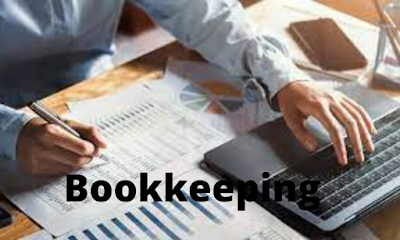What is Bookkeeping?
The origin of bookkeeping is missing in darkness, but recent research motions that methods of keeping accounts have happened from the secret times of human life in cities. Babylonian records written with good-looking on small boards of strength have been found dating to 2600 BCE. Records were made in chronological order, and for short-term use only.
Role of Bookkeepers
Bookkeepers are in control of maintaining an organization's key accounting records, known as records. Day-to-day occupation includes recording transactions such as profit and responsiveness and posting them to different accounts. Being a broad and varied work, a Bookkeeper job statement should underscore the requirement for a strong sense of time management and organizational skills, and with divestment to many aspects of the accounting function, it can be a stepping stone to a more senior or unique accounting role.
Understand Business Accounts
In the world of bookkeeping, an account does not send money to an in-person bank account. By choice, an account is a record of all financial transactions of a certain type, like sales or payroll.
There are five basic types of accounts:
- Assets, which are the money and device accepted by the business (e.g., accounts receivable, inventory)
- Liabilities, which are the promise and debts accept by the business (e.g., accounts payable, loans)
- Revenues or income, which is the money secured by the business, Generally from sales
- Expenses or expenditures, which is the money that streams out from the business to pay for some item or service (e.g., salaries, utilities)
- Equity, which is the value long-term after accountability are withdrawn from assets, representing the landlord held interest in the business (e.g., stock, retained earnings)
Set up your business accounts
Meaningful the accounts you want to path for your business is one article; setting them up is some other. Back in the day, graphs of accounts were documented in a physical book called the general ledger (GL). But now, most commerce use computer software to record accounts. It might be a virtual record rather than a hard copy, but the complete file is still called the general ledger.
There are three main methods for creating a GL:
- Spreadsheet software (e.g., Excel, Google Sheets)
- Desktop accounting bookkeeping software (e.g., QuickBooks Desktop)
- Cloud-based bookkeeping software (e.g., QuickBooks Online, Wave)
Decide on a bookkeeping method
If your method to do your own books in house, ideally of outsourcing to an accounting or bookkeeping firm, you need to make one critical choice before you start setting nothing up:
- Single-entry bookkeeping:- If a buyer pays you a sum, you enter that sum in your benefit column only. Makes sense, right? This technique can service if your commerce is easy. If you work out of your home, don’t have any baggage or directory to offer, and don’t proceed too regularly into the principality of cash transactions, you strongly view single-entry bookkeeping.
- Double-entry accounting system:- which is kind of like Newton’s Third Law of Motion, but for economics. A double-entry accounting, any transaction in one account requires an identical and different entry in another account. It is not physics, but for controlling a business, it’s just as principal.
Record every financial transaction
You have created your set of financial accounts and collected a bookkeeping system. Now it is time to account for what's literally occurring with your money.
It is searching that each debit and credit transaction is recorded accurately and in the good account. Differently, your account balances will not match and you will not be intelligent to close your booking.
author - kirti sagar






.jpg)


_taxiing_at_Schiphol_(AMS_-_EHAM),_The_Netherlands,_18may2014,_pic-6.jpg)

0 Comments